 Image search results - "tsuruga" Image search results - "tsuruga" |

JR Tsuruga Station
|
|

Kehi no Matsubara beach, one of Japan's three most famous pine tree beaches.The other two being Miho no Matsubara in Shizuoka and Karatsu in Saga Pref.
|
|

Hiroshige's woodblock print of Kehi Pine Beach in Tsuruga from his "Famous Views of the 60 Provinces" series.
|
|

A dinosaur waiting for his train at JR Tsuruga Station. Fukui Prefecture is famous for dinosaur digs. This is just a sculpture stealing a valuable place to sit, but it looks like a kid can sit on his lap.
|
|

Kehi Jingu Shrine is a 20-min. walk from JR Tsuruga Station. I visited on New Year's Day 2016 when it was a warm period with no snow.
|
|

Kehi Shrine's torii gate is one of Japan's three most famous wooden toriis. The other two being Miyajima's Itsukishima Shrine in Hiroshima Pref. and Kasuga Shrine in Nara.
|
|

Established in 702 and nicknamed "Kei-san," Kehi Jingu is a major shrine in the Hokuriku Region.
|
|
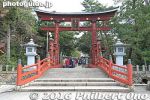
Built in 1645, the wooden torii is an Important Cultural Property and World War II survivor.
|
|
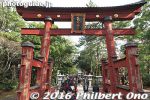
Kehi Shrine's torii is 11 m high. One of Japan's three most famous wooden toriis. The other two being Miyajima's Itsukushima Shrine in Hiroshima Pref. and Kasuga Shrine in Nara.
|
|

Long line from the torii to the shrine on Jan. 1, 2016.
|
|
|
|

Purify your hands and mouth.
|
|
|

Getting closer to the main shrine.
|
|
|
|
|

Long line.
|
|
|

Second torii before the main shrine.
|
|

Kehi Shrine
|
|

Kehi Jingu's main shrine. Kehi Jingu is dedicated to a number of gods including Emperor Chuai and Empress Jingu. So the Imperial Crest is all over the place.
|
|
|

It took about 35 min. to get here for what would normally be a one-min. walk. Five bell ringers for worshippers.
|
|

Inside the main shrine.
|
|
|
|
|
|
|

The place to buy lucky charms.
|
|

Brisk business for amulets and omamori.
|
|

Otorii ema from Kehi Jingu.
|
|

Another ema tablet for 2016, the Year of the Monkey
|
|

Year of the Monkey ema from Kehi Jingu.
|
|
|

Omikuji fortunes
|
|

Omikuji fortunes
|
|
|
|
|
|
|
|

Statue of Basho, haiku poet
|
|
|

No snow, but a few puddles.
|
|
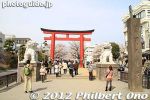
Torii on the Dankazura path to Tsurugaoka Hachimangu Shrine.
|
|
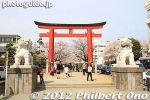
Dankazura path to Tsurugaoka Hachimangu Shrine.
|
|
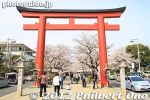
Dankazura path to Tsurugaoka Hachimangu Shrine.
|
|
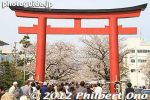
Dankazura path to Tsurugaoka Hachimangu Shrine.
|
|
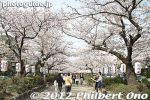
Dankazura path to Tsurugaoka Hachimangu Shrine is lined with many cherry trees which bloom in April (later than in Tokyo).
|
|
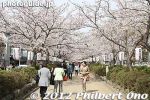
Cherry trees along the Dankazura path to Tsurugaoka Hachimangu Shrine.
|
|
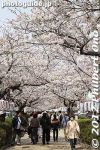
Cherry trees along the Dankazura path to Tsurugaoka Hachimangu Shrine.
|
|
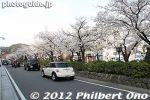
The Dankazura path to Tsurugaoka Hachimangu Shrine is in the middle of the busy Wakamiya Oji street.
|
|
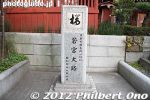
Marker indicating that Wakamiya Oji is one of Japan's 100 Famous Cherry Blossom Spots.
|
|

Another torii
|
|
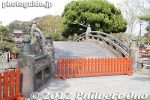
Arched bridge closed to the public.
|
|

Path to Tsurugaoka Hachimangu Shrine.
|
|
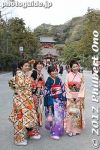
A few kimono ladies on their way to worship at Tsurugaoka Hachimangu Shrine, Kamakura.
|
|
|
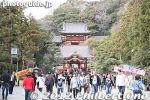
Tsurugaoka Hachimangu Shrine straight ahead.
|
|
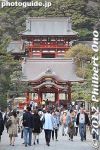
In the forefront is the Maiden sacred dance stage and the rear is the Hongu main worship hall.
|
|
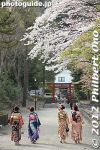
Kimono ladies and cherry blossoms.
|
|
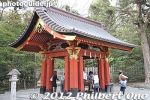
Fountain to cleanse yourself.
|
|
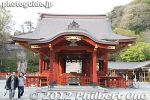
Mai-den sacred dance stage front view. 舞殿
|
|
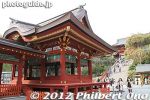
Mai-den sacred dance stage.
|
|
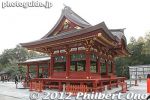
Mai-den sacred dance stage.
|
|
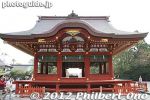
Mai-den sacred dance stage facing the Hongu. 舞殿
|
|
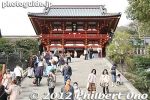
Stone steps going up to the Hongu main worship hall. 大石段
|
|
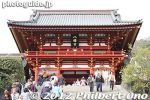
Gate to the Hongu.
|
|
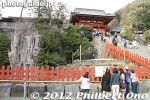
Next to the Stone Steps was a giant gingko tree which fell in a storm in 2010.
|
|
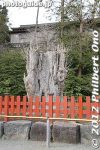
Only a tree stump remains of the gingko tree.giant gingko tree which fell in a storm in 2010.
|
|

About the fallen gingko tree.
|
|
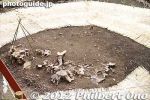
The original tree might still grow.
|
|
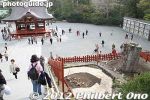
Spot where the gingko tree was.
|
|
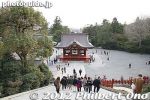
View of the Maiden from the Stone Steps.
|
|
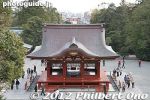
Maiden sacred dance stage.
|
|
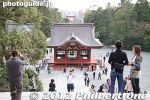
View from the top of the Stone Steps.
|
|
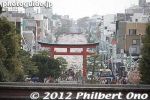
Dankazura path as seen from the top of the Stone Steps.
|
|
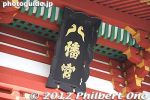
Hachimangu sing
|
|
|
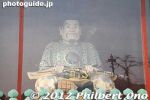
Statue in the gate.
|
|
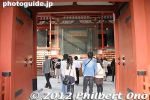
Hongu main hall.
|
|
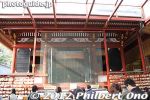
Hongu main worship hall at Tsurugaoka Hachimangu Shrine. The left side of the Hongu is a small museum. 本宮
|
|
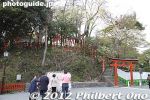
On the left of the Hongu is Maruyama Inari Shrine.
|
|
|
|
|
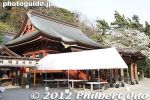
Wakamiya Shrine, the shrine's only building that is an Important Cultural Property.
|
|
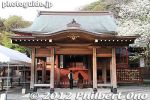
Wakamiya Shrine, Tsurugaoka Hachimangu Shrine's only building that is an Important Cultural Property. 若宮
|
|
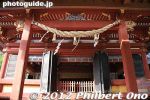
Wakamiya Shrine, Tsurugaoka Hachimangu Shrine's only building that is an Important Cultural Property. 若宮
|
|
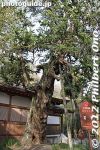
Tree planted in 1963, one of Kamakura's Natural Monuments.
|
|
|
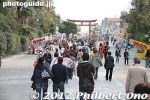
Path leaving the shrine.
|
|

Map of Tsurugaoka Hachimangu Shrine.
|
|
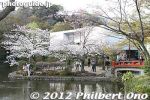
Genpei Pond in a Japanese garden full of cherry blossoms.
|
|
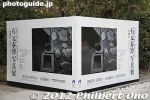
Museum of Modern Art, Kamakura
|
|
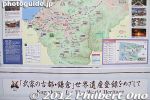
Kamakura is pushing for World Heritage Site status.
|
|

Genpei Pond in a Japanese garden full of cherry blossoms.
|
|
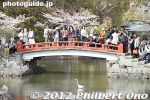
Bridge over Genpei Pond in a Japanese garden full of cherry blossoms.
|
|
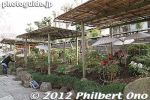
The shrine's Japanese garden includes a Peony Garden. A small admission is charged.
|
|
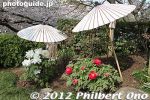
Peony garden at Tsurugaoka Hachimangu Shrine.
|
|
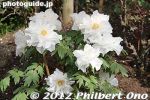
Exotic peonies at Tsurugaoka Hachimangu Shrine's Japanese garden.
|
|
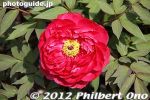
Exotic peonies at Tsurugaoka Hachimangu Shrine's Japanese garden.
|
|
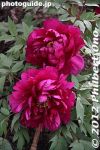
Exotic peonies at Tsurugaoka Hachimangu Shrine's Japanese garden.
|
|
|
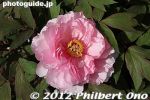
Exotic peonies at Tsurugaoka Hachimangu Shrine's Japanese garden.
|
|
|
|
|
|
|
|
|
|
|
|
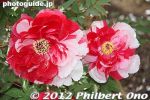
Red and white peonies.
|
|
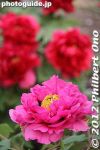
Peonies (botan in Japanese).
|
|
|
|
|

Rock Garden
|
|

About the Rock Garden
|
|
|
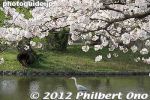
White heron and cherry blossoms.
|
|
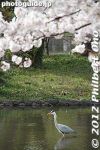
White heron and cherry blossoms.
|
|
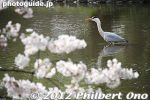
Grey heron and cherry blossoms.
|
|
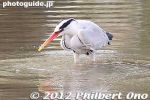
Heron finds a snack.
|
|
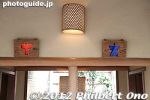
Restroom sign.
|
|
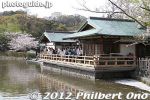
Rest house in the Japanese garden.
|
|
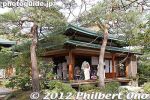
Tea ceremony house
|
|
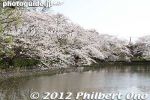
Cherry blossoms line the edge of Genpei Pond. 源平池
|
|
|
|
|
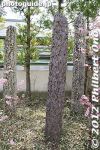
Petrified rocks
|
|
|
|
|
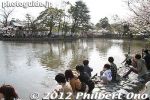
Small island in Genpei Pond has Benzaiten Shrine.
|
|
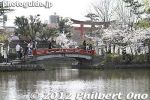
Bridge connects to a small island with Benzaiten Shrine.
|
|

Bridge connects to a small island with Benzaiten Shrine.
|
|
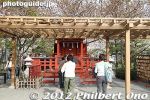
Benzaiten Shrine
|
|
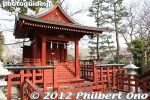
Benzaiten Shrine
|
|
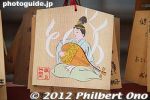
Goddess Benten
|
|
|

Genpei Pond and cherry blossoms.
|
|
|
|
|
|
|
|

Grey heron
|
|

From JR Tsuruga Station, it's a scenic bus ride to the Tsuruga Nuclear Power Plant.
|
|

Held during the Bon season on Aug. 16, toro nagashi is candle-lit paper lanterns floated on the ocean as a Buddhist offering to the spirits of the deceased.Tsuruga holds its mass toro nagashi (6,000 lanterns) on its famous Kehi no Matsubara beach at 6:30 pm, and then shoots off a grand fireworks display. My video of Toro Nagashi and brilliant marine fireworks taken on Aug. 16, 2017.
|
|
|

Offshore sandbar popular with swimmers.
|
|

Another power plant
|
|

Out in the boondocks of Tsuruga is the Tsuruga Nuclear Power Plant. All fenced in.
|
|

Tsuruga Nuclear Power Plant. All fenced in with security cameras everywhere.
|
|

Near the plant is their public relations facility and museum called the Tsuruga Nuclear Power Pavilion or Tsuruga PR Pavilion. A 40-min. bus ride from JR Tsuruga Station.
|
|

Tsuruga Nuclear Power Pavilion or Tsuruga PR Pavilion.
|
|

From the Tsuruga Nuclear Power Pavilion, we can view the Tsuruga Nuclear Power Plant.
|
|

Tsuruga Nuclear Power Plant (敦賀発電所). The cylindrical domed building on the left is the No. 1 reactor, Japan's first light-water reactor that operated from 1970 to 2015. Square building on the rght is No. 2 reactor, a pressurized water reactor in operation since 1987. Supplies power to Kansai, Hokuriku, and Chubu Regions.
|
|

What's what at the Tsuruga Nuclear Power Plant. The Tsuruga Nuclear Power Plant started operating commercially on March 14, 1970, the same day when Expo '70 opened in Osaka. Expo '70 in Osaka was the Tsuruga Nuclear Power Station's first commercial customer.
|
|

Natural Gallery
|
|

Natural Gallery
|
|
|

Model of Tsuruga Nuclear Power Plant. On the lower right is the two additional reactors they had planned to build, but shelved after the Tohoku disaster in 2011.
|
|

Model of Tsuruga Nuclear Power Plant.
|
|
|
|

Atomic Theater shows how a nuclear power plant works.
|
|
|
|

Nuclear power plants in Japan.
|
|

Nuclear power plants in Fukui Prefecture.
|
|

Fukui Prefecture produces the highest amout of nuclear power in Japan.
|
|
|

Japan's first PCCV construction of a nuclear reactor housing.
|
|
|

Safety of nuclear power plant workers.
|
|
|
|
|
|

Nuclear waste drum.
|
|

Nuclear waste canister
|
|

Outside the museum, you can walk around the park-like grounds.
|
|

Playground for kids.
|
|
|
|
|
|

How a nuclear reactor produces electricity.
|
|

Thermal power generation
|
|
|

Model trains powered by winding.
|
|
|

Line to board the free shuttle bus from Tsuruga Station to Kehi no Matsubara Beach.The waiting time was minimal since buses kept coming often. They chartered buses from numerous bus companies.
|
|

15-min. walk from the bus stop to the beach. People everywhere.
|
|

Crowd on Kehi no Matsubara Beach
|
|
|

The crowd stretched to the very far side of the bay.
|
|
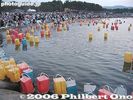
At 6:30 pm, people started releasing their candlelit lanterns into the ocean. Tsuruga, Fukui Pref.
|
|
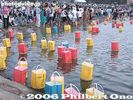
You could buy a lantern for 500 yen. Choice of three colors: Red, blue, and yellow.
|
|

Toro nagashi at Kehi no Matsubara Beach in Tsuruga, Fukui Pref.
|
|
|
|
|
|
|

The lanterns say "For the Spirits of Past Generations."
|
|
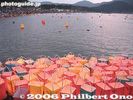
I was sitting on a jetty where many lanterns got stuck. We could feel the hot air from the candles.
|
|
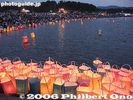
As it got darker, the scene got prettier.
|
|
|
|
|
|
|
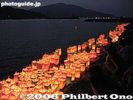
Lanterns along the jetty.
|
|
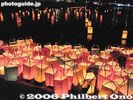
By 7:30 pm, it was completely dark.
|
|
|
|
|

Fireworks started at 7:30 pm.
|
|

Great match with the lit lanterns and fireworks.
|
|
|

Whoever thought of combining toro nagashi with fireworks was a genius.
|
|

Toro nagashi and fireworks at Tsuruga, Fukui Pref.
|
|

Bright fireworks light up the audience on the beach.
|
|

The fireworks were brilliant and world-class, included a few waterborne "half-dome" fireworks.
|
|

Line for the free shuttle bus back to Tsuruga Station. They had many shuttle buses so we didn't have to wait long.It was a very efficient and quick operation. Although I did leave early.
|
|

Stone marker for Tsurugajo Castle. Although the castle's official name is Wakamatsu Castle, it is popularly called Tsuruga-jo Castle within the city of Aizu-Wakamatsu. Outside Fukushima though, it is popularly called Aizu-Wakamatsu Castle.
|
|

Otemon Gate to Kitade-maru 大手門. The castle was first built by Ashina Naomori in 1384 when he built a structure called Higashi Kurokawa Yakata.
|
|

Otemon Gate stonework. The castle was occupied by a number of clans. But it was Gamo Ujisato, originally from Hino, Shiga Prefecture, who made the castle great and established the castle town of Aizu-Wakamatsu.
|
|

Otemon Gate stonework with stairs, one unique feature of the castle. The castle was attacked by Imperial forces during the Boshin War in 1868. The castle was dismantled in 1874.
|
|

Most next to Otemon Gate
|
|

Foilage on the slopes of Honmaru
|
|

Kitade-maru 北出丸
|
|

Foilage on Kitade-maru 北出丸
|
|

Monument on Kitade-maru 北出丸
|
|

Foilage and stone gate
|
|

Tsubakizaka Slope which is a bridge to the castle tower. 椿坂
|
|

Castle map. I recommend entering through the Kitaguchi entrance and exiting from the San-no-maru entrance or vice versa. Both entrances has a High-color bus stop nearby. The castle is too far to walk from Aizu-Wakamatsu Station, so take a bus.
|
|

Tsubakizaka Slope which is lined with cherry trees. 椿坂
|
|

Taikomon Gate where there was a multi-story turret which had a taiko drum used to signal the coming of a lord or for emergencies. 太鼓門
|
|

Taikomon Gate stonework
|
|
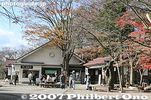
Right beyond the Taikomon Gate is a tourist info office, cafe, restrooms, and benches.
|
|

Wakamatsu Castle as seen from the rear.
|
|

Tsuruga-jo Castle as seen from the rear.
|
|

These stairs on the castle's stone walls are called Musha-bashiri. They enabled the warriors to run up to the turrets quickly during attacks. It is one distinguishing feature of the castle. 武者走り
|
|

Family crests of all the warrior clans who occupied Wakamatsu Castle.
|
|

Honmaru Uzumimon Gate which leads to the castle tower. There was a turret here on the stone foundation. 本丸埋門
|
|

Honmaru Uzumimon Gate and tenshukaku castle tower.
|
|

Castle tower as seen from Honmaru Uzumimon Gate
|
|

Castle tower as seen from Honmaru Uzumimon Gate. In the lower right is the ticket office to enter the castle tower. Castle tower admission is 400 yen for adults. Or pay 500 yen to include the ticket to see the Rinkaku Tea House. Open 8:30 am to 5 pm.
|
|

Castle tower as seen from the west side full of cherry trees. Tsuruga-jo Castle Park is one of Japan's 100 Best Cherry Blossom Spots.
|
|

Castle tower as seen from the west side in the Obikurawa 帯郭
|
|

Castle tower as seen from the west side in the Obikurawa 帯郭
|
|

Wakamatsu Castle tower, called tenshukaku. In 1590, Gamo Ujisato became the castle lord and he built a 7-story castle tower completed in 1593. He renamed the castle Tsuruga-jo and renamed the town from Kurokawa to Wakamatsu.
|
|

The castle tower was reconstructed as a ferroconcrete building in Sept. 1965 on its original site.
|
|

Tsuruga-jo Castle tower. It is lit up at night.
|
|

Tsuruga-jo Castle tower
|
|
|
|